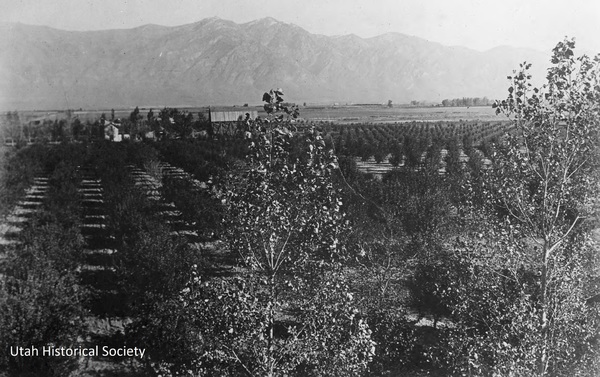Dublin Core
Title
Description
During World War II, a massive increase in Utah’s industrial manufacturing fundamentally transformed the state’s rural communities and landscapes. The US government's search for minerals, driven by a wartime desire for American self-sufficiency in metal production, meant new factories sprung up across the American West – including here in Utah. Between 1939 and 1945, the state's manufacturing output increased 200%!
In Utah Valley, steel manufacturing changed the landscape from farmland to suburbs. Prior to the war, a thriving agricultural sector covered the valley with fruit orchards and small family farms. Provo was then known as Utah’s “Garden City,” but eventually claimed the mantle of “Steel Center of the West” because of its proximity to Geneva Steel Works.
An enormous wartime factory, Geneva was established in 1941 on 1,600 acres next to Utah Lake. The plant was funded with $190 million federal dollars, required 10,000 men to build, and attracted thousands of workers and their families. By 1960, Geneva Steel Works employed 30% of the workers in Utah County, most of whom had previously farmed the local fields and orchards.
Because of Geneva, Orem’s population doubled every decade between 1940 and 1980 – growing from 2,900 to 52,000 people. The demand for housing drove suburban expansion, which ate up more and more agricultural land. During the post-war period, strip malls and subdivisions replaced the orchards and farms that once defined Utah Valley’s landscape, creating a suburban space focused on consumers rather than agricultural producers. With a booming population and real estate available right on the new interstate I-15, developers saw Orem as the obvious choice for Utah Valley’s first shopping mall. By 2000, all of the town’s orchards were gone.
Utah County is still among the state’s fastest growing. Today, tech companies moving in have earned the county's northern end a new nickname: “Silicon Slopes.” As outside pressures continue to force rural Utah towns to envision what they want for the future, the rapid transformation of Utah Valley might provide a roadmap for what to expect, or perhaps to avoid.
Creator
Source
_______________
See Jared Farmer, On Zion’s Mount: Mormons, Indians, and the American Landscape (Harvard University Press, 2008); Richard White, “World War II and Its Aftermath: Reshaping the West,” “It’s Your Misfortune and None of My Own:” A New History of the American West (Oklahoma, 1991), pp. 496-533; Jorge Iber, Hispanics in the Mormon Zion, 1912-1999 (Texas A&M University Press, 2000).

